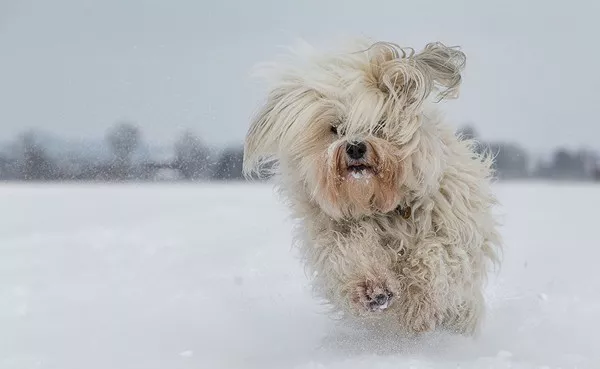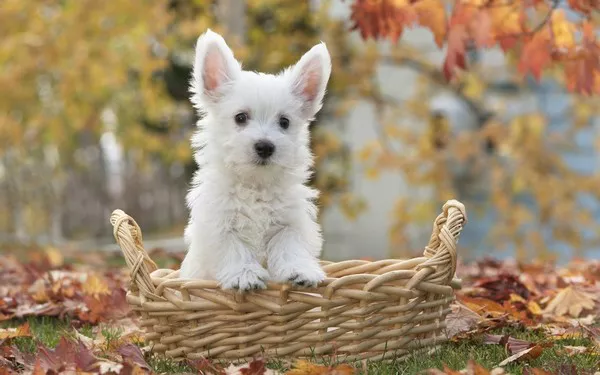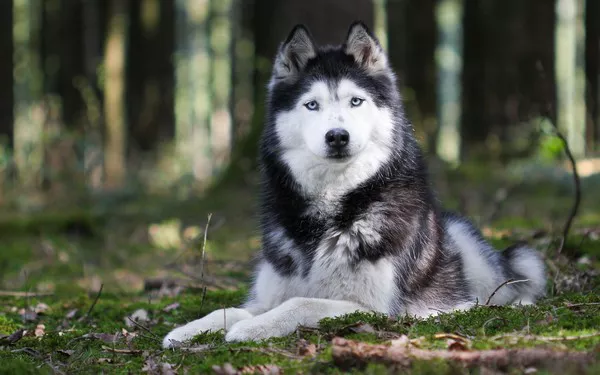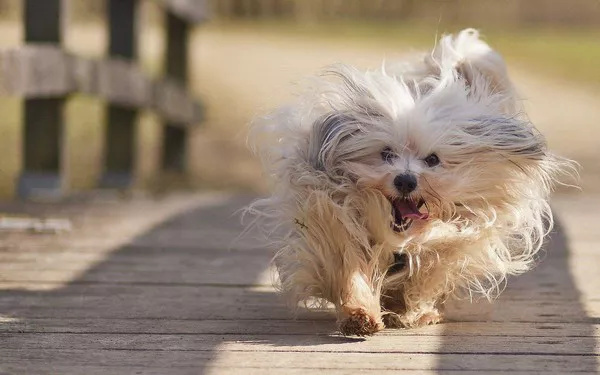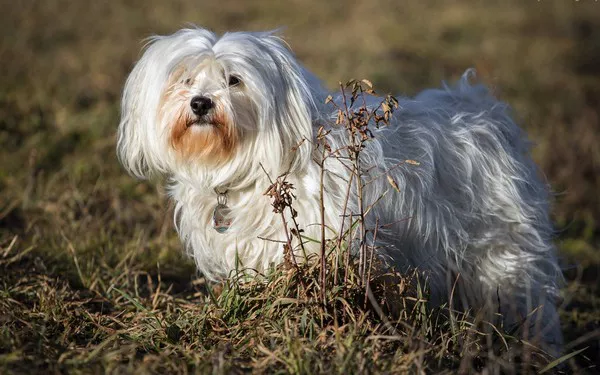The Miniature Schnauzer, with its distinctive beard, bushy eyebrows, and spirited personality, is known for its intelligence and affectionate nature. As a pet owner, you may have observed a behavior that, while seemingly simple, can be both intriguing and puzzling: your Mini Schnauzer’s habit of staring at you. This behavior can often leave owners wondering: “Why does my Mini Schnauzer stare at me?”
In this comprehensive article, we will delve into the reasons behind this behavior, exploring its psychological, emotional, and evolutionary aspects. Understanding why your Mini Schnauzer maintains eye contact can enhance your relationship with your pet and improve communication and training strategies.
The Science of Canine Communication
To understand why your Mini Schnauzer stares at you, it’s essential to explore the basics of canine communication. Dogs use a variety of signals and cues to interact with their human companions and other animals. Eye contact is one of these crucial communication tools.
Canine Body Language
In the canine world, eye contact can convey different messages depending on the context. For dogs, eye contact can signify various emotions and intentions, including:
Affection and Bonding: Prolonged eye contact often indicates that a dog feels comfortable and secure with its owner. In many cases, dogs will gaze at their owners as a sign of love and trust.
Attention-Seeking: Dogs may stare to capture their owner’s attention, whether they want to play, need to go outside, or are simply seeking interaction.
Reactivity: In some situations, a dog’s stare can be a sign of discomfort or a prelude to defensive behavior, especially if combined with other signs of stress or agitation.
Understanding the context of your Mini Schnauzer’s stare is crucial in interpreting its meaning. The breed’s inherent characteristics and individual personality traits also play a significant role in this behavior.
Evolutionary Perspectives on Canine Staring
The Miniature Schnauzer’s behavior can be better understood through the lens of evolution. The relationship between humans and dogs dates back thousands of years, and during this time, dogs have evolved to communicate effectively with humans.
Domestication and Co-Evolution
Dogs were domesticated from wolves, and their ability to read and respond to human cues has been finely tuned over generations. Unlike their wild ancestors, domestic dogs have developed unique behaviors that facilitate communication with humans. Staring is one such behavior that has evolved as part of this intricate relationship.
The Role of Eye Contact in Dog-Human Relationships
Research has shown that dogs and humans have a unique bond that involves mutual eye contact. When a dog looks at its owner, it can trigger the release of oxytocin, often referred to as the “love hormone,” in both the dog and the human. This hormonal response reinforces the bond between the two species and can create a sense of mutual affection and attachment.
In fact, studies have demonstrated that when dogs gaze into their owners’ eyes, their levels of oxytocin increase, mirroring the bonding process seen between human parents and their children. This mutual gaze enhances the emotional connection and strengthens the relationship.
Behavioral Contexts for Staring
To understand why your Mini Schnauzer stares at you, consider the various contexts in which this behavior occurs. Each situation can provide valuable insights into your dog’s intentions and needs.
Seeking Attention
One of the most common reasons for a Mini Schnauzer to stare at its owner is to seek attention. Dogs are social animals that thrive on interaction with their human companions. If your Mini Schnauzer is staring at you, it might be trying to communicate that it wants to play, go for a walk, or simply be petted.
Anticipating Reward
Mini Schnauzers are intelligent and food-oriented dogs. If your pet has learned that staring at you often leads to receiving a treat or meal, it may engage in this behavior as a way to signal its desire for a reward. This behavior is reinforced over time as the dog learns that staring often results in positive outcomes.
Communicating Needs
Your Mini Schnauzer may also use eye contact to express specific needs. For instance, if your dog is staring at you and then towards the door, it could be signaling that it needs to go outside. Similarly, if your dog looks at you and then its water bowl, it might be trying to let you know that it’s thirsty.
Emotional State
A Mini Schnauzer may also stare at you when it’s feeling anxious or stressed. In such cases, the stare may be accompanied by other signs of distress, such as pacing, whining, or avoiding eye contact. Understanding these cues can help you address your dog’s emotional needs and provide comfort.
The Impact of Training and Socialization
The way your Mini Schnauzer interacts with you, including staring behavior, can be influenced by its training and socialization experiences. Training methods and socialization practices can affect how a dog communicates and responds to its environment.
Positive Reinforcement
Training methods that use positive reinforcement can encourage behaviors such as eye contact. For instance, if you reward your Mini Schnauzer for maintaining eye contact during training sessions, it may be more likely to use this behavior to engage with you in various contexts.
Socialization and Bonding
Early socialization plays a crucial role in shaping a dog’s behavior and communication skills. Mini Schnauzers that are well-socialized from a young age are more likely to be confident and comfortable with eye contact. Proper socialization helps dogs understand and respond appropriately to different social cues, including those from their human companions.
Practical Implications for Pet Owners
Understanding why your Mini Schnauzer stares at you can have practical implications for your relationship and daily interactions with your pet. Here are some ways you can leverage this understanding to improve your bond and address your dog’s needs effectively:
See Also: Do Schnauzers Shed a Lot of Hair?
Strengthening the Bond
If your Mini Schnauzer’s staring behavior is a sign of affection, you can use this as an opportunity to strengthen your bond. Engage with your dog through activities that reinforce positive interactions, such as playtime, training sessions, or simply spending quality time together. Your response to your dog’s stare can further enhance the emotional connection.
Addressing Behavioral Issues
If your Mini Schnauzer’s staring is linked to behavioral issues, such as anxiety or attention-seeking, consider addressing these concerns with appropriate strategies. For example, providing consistent routines, offering enrichment activities, and ensuring sufficient exercise can help reduce anxiety and improve your dog’s overall well-being.
Training and Communication
Incorporate eye contact into your training sessions to improve communication and responsiveness. Teaching your Mini Schnauzer to make eye contact on command can enhance focus and cooperation during training. Additionally, using eye contact to communicate with your dog can help you better understand its needs and intentions.
Understanding and Enhancing the Human-Canine Bond
The staring behavior of your Mini Schnauzer is a valuable form of communication that can provide insights into your dog’s emotional state and needs. By understanding the underlying reasons for this behavior, you can enhance your bond with your pet and improve your interactions.
Empathy and Responsiveness
Responding empathetically to your Mini Schnauzer’s stare can strengthen your relationship and build trust. Recognize the context of the stare and respond appropriately, whether it’s by offering attention, addressing needs, or providing comfort.
Consistent Communication
Maintaining consistent communication with your Mini Schnauzer can help reinforce positive behaviors and reduce misunderstandings. Use eye contact as a tool for training and interaction, and be mindful of the signals your dog is sending.
Ongoing Learning and Adaptation
Understanding canine behavior is an ongoing process that requires continuous learning and adaptation. Stay informed about canine communication and behavior, and be open to adjusting your approach based on your Mini Schnauzer’s evolving needs and preferences.
Conclusion
In summary, the behavior of your Mini Schnauzer staring at you can be attributed to a variety of factors, including communication, affection, attention-seeking, and emotional needs. By exploring the scientific, evolutionary, and behavioral aspects of this behavior, you can gain a deeper understanding of your pet and enhance your relationship.
Recognizing the context and intention behind your Mini Schnauzer’s stare can lead to more effective communication, improved training, and a stronger bond between you and your furry companion. As you continue to engage with your Mini Schnauzer, remember that eye contact is a powerful tool for understanding and connecting with your pet, fostering a relationship built on mutual affection and trust.
Related Topics:

